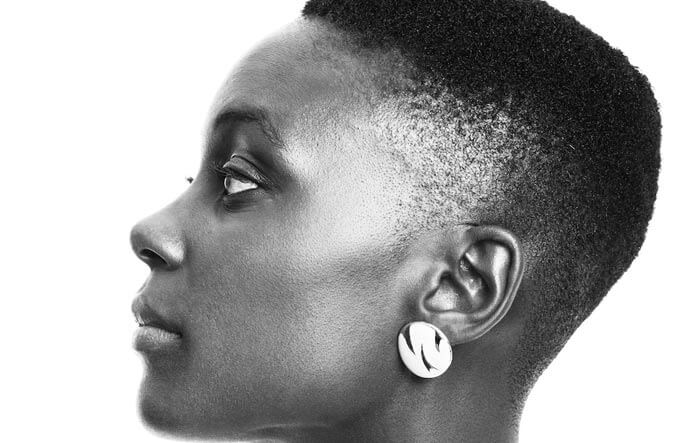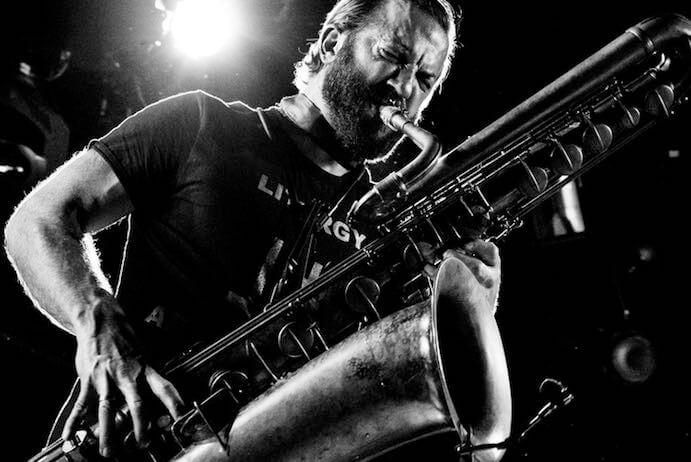Kate Nordstrum is the curator of St. Paul Chamber Orchestra’s Liquid Music Series, which just kicked off its fifth season. Liquid Music brings artists to venues around the Twin Cities to present new works, often in experimental formats and with new collaborations. This season’s roster of artists includes Colin Stetson, Roomful of Teeth with Nick Zammuto, David Lang, and Sarah Kirkland Snider. I asked Kate 5 questions about this unique series and the curation process.
How do you start planning the artists and projects for a new season?
For most of our concerts, we’re looking to help artists realize a project that’s new or they’ve had in mind for a while and they need various kinds of support to realize. It’s a combination of existing relationships and new introductions, but I reach out to some people asking for project ideas because I think they probably have something exciting in mind and I’m curious to dig it out of them. Other artists come to me with more fully-formed project concepts or pitches.
It’s important for me, when I look at a season as a whole, to feel like there’s an interesting arc or trajectory and that we’re showing enough electronic work, or there’s enough work by women composers featured. The spread is important, and sometimes it’s important for me to go after artists who might be less up front with pitching projects, but I think have a lot to share and that our audiences should hear from.
A good example of that is last year. I reached out to Natalie Joachim, the flute player from eighth blackbird. I’ve been really taken with her playing and heard about a few side projects she’s done and I knew that she had some new ideas for work. Now Liquid Music is investing in a new project over the course of the year, in what we’re calling a “virtual residence.” The audience is able to get some insight into the early end of a project via blog posts and other media and see how something builds, and how all of it goes into what we see on the page 2 years later. This season we’ll start building with Natalie and next season it will come to fruition.

As a presenter, there’s a certain amount of risk involved in presenting totally new programs, especially with artists exploring new ways of working. How do your audiences react to that risk?
I think it’s very understood and it brings a real energy to the performances. We try to do our best with the blog, social media, etc. to communicate the building of these projects, and that the artist is taking risks to premiere the work here, and not for the piece to be battle-tested and perfect. There’s so little knowledge going in, even if the musician is someone you might know like [Minneapolis band] Poliça or Tunde Adebimpe from TV on the Radio. There’s a real electricity in the room and that’s one of the reasons the series has really taken off. I love eavesdropping on the audience members because I might hear them asking their neighbor, “do you know anything about this performance?” It’s not about presenting a prestige “repertoire” concert – we want to be a different kind of resource to audiences and our artists.
Liquid Music has a monthly podcast as well. How does this outlet work with the series’ concert presentation?
We wanted the podcast to be an extension of what we’re doing already with the concerts. The artist talks a little bit with host Steve Seel about their own music and refers us to a piece of music, album, or something they think the audience should know about. The audience is able to take the next step: they get a referral and keep exploring beyond just the concert experience or even that artist’s music. Liquid Music is all about opening our eyes to all sorts of different things happening in new music today, and we want the curiosity to extend beyond the performances. Also, all of our concerts are in Minneapolis and St. Paul and we want to spread the good word to people who aren’t here.

How does Liquid Music fit into St. Paul Chamber Orchestra’s season?
Liquid Music gives SPCO an opportunity to not just develop a curious audience, but to work with a composer on a different platform. They might commission a work by someone working today, and Liquid Music can work with the composer in a different season to show another side of the composer’s work, like how they collaborate with a chamber ensemble, dance company, or artist in another medium. For example, Timo Andres and Caroline Shaw were first seen on the Liquid Music stage, and then were later commissioned to write pieces for the SPCO. This coming season, the orchestra and Liquid Music are both participating in a Nordic music festival called Where Words End, and there will be some overlap with the Bedroom Community concert. That’s our first time programming together under a conceptual umbrella, but I see more opportunity for that going forward in both programming and education.
And how about into the cultural fabric of the Twin Cities?
The Twin Cities is an amazing cultural place. People here want to be stretched and they want to learn – audiences here crave this stuff! There’s all sorts of long-running small and large institutions that have cultivated this attitude, but also funding organizations to help the arts. For example, there’s the Walker Arts Center, the American Composers’ Forum, the two main orchestras, a great dance company, and many more. Liquid Music does concerts in both Minneapolis and St. Paul and moves around according to the project needs, so we engage with a lot of other organizations and venues in the Twin Cities.
I also want to work with musicians that have never been in the Twin Cities before. For example, some of the artists associated with Bedroom Community have been here, but not vocalist Miriam Wallantin, who’s kind of the face of that particular concert this season! Of course, there were a lot of projects that came my way that would absolutely be worthy of our stage this season, including from previous collaborators, but I wanted to make sure we represented a variety of practices and new voices for the Twin Cities.
























